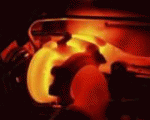- Replies 15
- Views 7.7k
- Created
- Last Reply
Top Posters In This Topic
-
 Mopar1973Man 5 posts
Mopar1973Man 5 posts -
 CUMMINSDIESELPWR 4 posts
CUMMINSDIESELPWR 4 posts -
 KATOOM 3 posts
KATOOM 3 posts -
I6FREAK 3 posts


what is the issue with setting fuel pressure to higher levels, 20 or 25 psi so under load it can flow more volume keeping pressure say around 19 psi at wot. also I'veheard that as long as it starts then it is ok....is that the limiting factor of the pressure going into vp44?